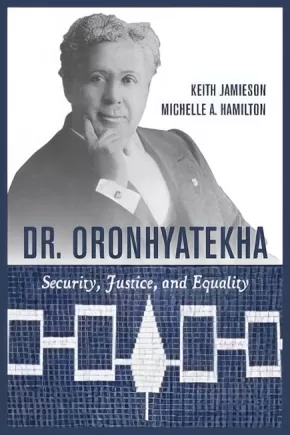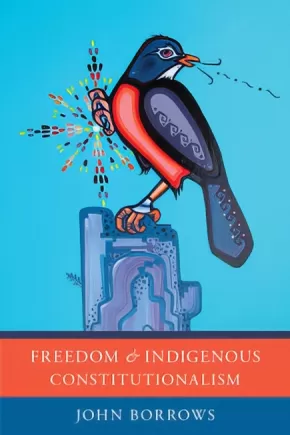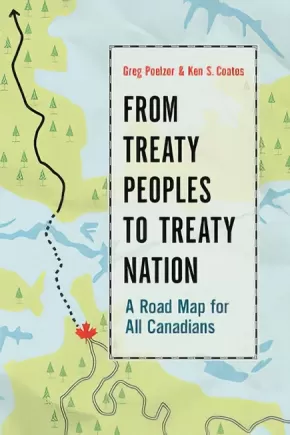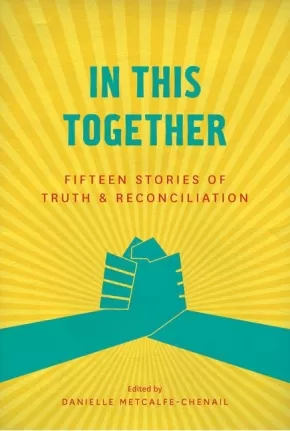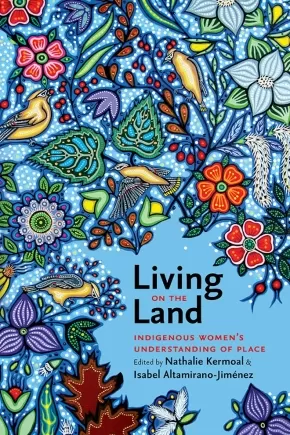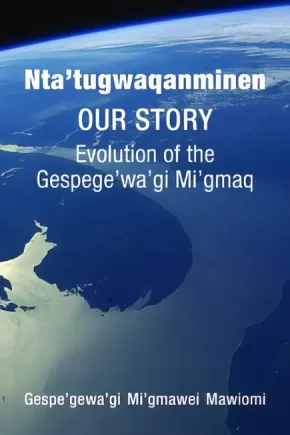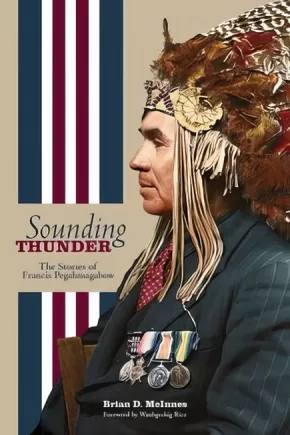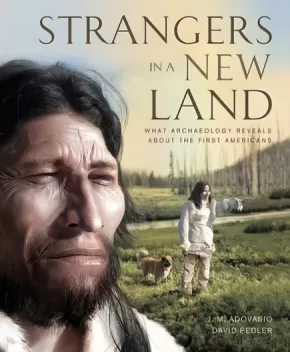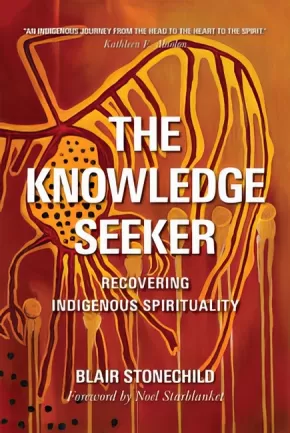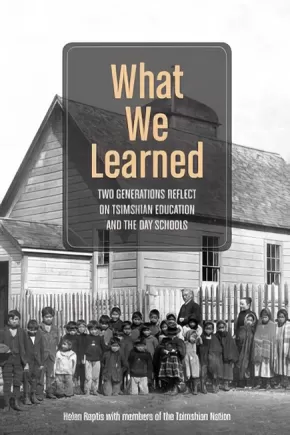
Indigenous Studies
841
-
855
of
1030 Results;
Sort By
Go To
of 69
Dr. Oronhyatekha: Security, Justice, and Equality
$26.99
Format:
Paperback
Text Content Territories:
Indigenous American; Native American; Haudenosaunee (Iroquois); Kanyen'keha:ka (Mohawk);
Grade Levels: University/College;
ISBN / Barcode: 9781459706637
Synopsis:
Synopsis:
A man of two cultures in an era where his only choices were to be a trailblazer or get left by the wayside.
Dr. Oronhyatekha (“Burning Sky”), born in the Mohawk nation on the Six Nations of the Grand River territory in 1841, led an extraordinary life, rising to prominence in medicine, sports, politics, fraternalism, and business. He was one of the first Indigenous physicians in Canada, the first to attend Oxford University, a Grand River representative to the Prince of Wales during the 1860 royal tour, a Wimbledon rifle champion, the chairman of the Grand General Indian Council of Ontario, and Grand Templar of the International Order of Good Templars. He counted among his friends some of the most powerful people of the day, including John A. Macdonald and Theodore Roosevelt. He successfully challenged the racial criteria of the Independent Order of Foresters to become its first non-white member and ultimately its supreme chief ranger.
At a time when First Nations peoples struggled under assimilative government policy and society’s racial assumptions, his achievements were remarkable.
Oronhyatekha was raised among a people who espoused security, justice, and equality as their creed. He was also raised in a Victorian society guided by God, honour, and duty. He successfully interwove these messages throughout his life, and lived as a man of significant accomplishments in both worlds.
Awards
2016 Ontario Historical Society Joseph Brant Award winner
2017 Speaker's Book Award short-listed
Review
With their detailed biography of this giant of Canadian history, Jamieson and Hamilton have done an enormous favour both for aboriginals and non-aboriginals living on this piece of geography currently known as Canada.
— Tworowtimes
Key Points
- A comprehensive biography of Dr. Oronhyatekha, Canada’s first Indigenous physician, and an influential First Nations statesman.
- Covers his friendships with Teddy Roosevelt and John A. Macdonald and his international business.
- He was the first non-White member of the Independent Order of Foresters (IOF), a fraternally organized life-insurance company, having successfully challenged the race criteria for membership.
- As CEO of the IOF, he transformed it from a near-bankrupt, legally embattled organization to a financially stable international company.
- Ahead of his time, Oronhyatekha attempted to broaden the mandate of the IOF so that women and French-Canadians could belong.
- Also details the political, social, and historical context of the Six Nations of the Grand River community in the mid-nineteenth century.
Additional Information
368 pages | 6.00" x 9.00" | b&w and colour illustrations | notes, index, bibliography
Freedom and Indigenous Constitutionalism
$45.95
Format:
Paperback
Text Content Territories:
Indigenous Canadian; First Nations; Anishinaabeg; Ojibway;
Grade Levels: University/College;
ISBN / Barcode: 9781442629233
Synopsis:
Synopsis:
Indigenous traditions can be uplifting, positive, and liberating forces when they are connected to living systems of thought and practice. Problems arise when they are treated as timeless models of unchanging truth that require unwavering deference and unquestioning obedience. Freedom and Indigenous Constitutionalism celebrates the emancipatory potential of Indigenous traditions, considers their value as the basis for good laws and good lives, and critiques the failure of Canadian constitutional traditions to recognize their significance.
Demonstrating how Canada’s constitutional structures marginalize Indigenous peoples’ ability to exercise power in the real world, John Borrows uses Ojibwe law, stories, and principles to suggest alternative ways in which Indigenous peoples can work to enhance freedom. Among the stimulating issues he approaches are the democratic potential of civil disobedience, the hazards of applying originalism rather than living tree jurisprudence in the interpretation of Aboriginal and treaty rights, American legislative actions that could also animate Indigenous self-determination in Canada, and the opportunity for Indigenous governmental action to address violence against women.
Awards
- 2017 Donald Smiley Prize awarded by the Canadian Political Science Association joint winner
Reviews
"This remarkable work is at once challenging and accessible, philosophical and practical, and wide-ranging while firmly rooted in Anishinaabe tradition. Borrows takes a realistic, creative, and intellectually rigorous approach to some of the most difficult and pressing issues in Indigenous law, constitutional law, and political philosophy, as well as all readers who wish to better understand the relationship between indigenous peoples and Canada."— Katherine Starks, Saskatchewan Law Review
Additional Information
384 pages | 5.98" x 8.99"
From Treaty Peoples to Treaty Nation: A Road Map for All Canadians
$34.95
Format:
Paperback
Text Content Territories:
Indigenous Canadian;
Reading Level: N/A
ISBN / Barcode: 9780774827546
Synopsis:
Synopsis:
Canada is a country founded on relationships and agreements between Indigenous people and newcomers. Although recent court cases have strengthened Aboriginal rights, the cooperative spirit of the treaties is being lost as Canadians engage in endless arguments about First Nations “issues.” Greg Poelzer and Ken Coates breathe new life into these debates by looking at approaches that have failed and succeeded in the past and offering all Canadians – from policy makers to concerned citizens – realistic steps forward. The road ahead is clear: if all Canadians take up their responsibilities as treaty peoples, Canada will become a leader among treaty nations.
Reviews
What is clear from this survey is that no consensus exists around how to improve Aboriginal and non-Aboriginal relations. This sketch by Poelzer and Coates does, however, do more than provide the reader with a useful review of proposals aimed at solving the “Indian problem” in Canada; it allows the authors to situate their own approach within a very complex debate characterised by a diversity of opinions (both within the Aboriginal and non-Aboriginal intellectual communities). From Treaty Peoples to Treaty Nation’s originality flows from its focus on the practical elements of these problems. By contrast, most other scholars’ approaches are philosophical, idealistic, and theoretical … With the Truth and Reconciliation Commission of Canada’s release of its Final Report earlier this year, Poelzer and Coates’ work could not be timelier. — Darius Bossé, Saskatchewan Law Review, January 2016
"The greatest value of this volume [is that] it seeks to force productive debate, not fruitless fingerpointing and rancor. Whether or not it succeeds in doing so for Canada remains to be seen. Whether the United States, including the many indigenous peoples in the Great Plains, takes notice and begins more meaningful discussions of Americans as “Treaty Peoples” and a “Treaty Nation” likewise remains unclear. As a region with strong indigenous history and presence, these are debates worth having — on both sides of the border." — Brenden W. Rensink, Charles Redd Center for Western Studies Brigham Young University, Great Plains Research, October 2016
"The book provides an excellent summary of the work of various Canadian Indigenous political scholars such as Kiera Ladner, Bonita Beaty, Dan Russell, John Borrows and Glenn Coulthard. The treaty theme runs throughout the book, with historical and contemporary examples. This allows the reader to understand the past but also facilitates awareness of the modern-day treaty process that is underway in some parts of Canada.— Cora Voyageur, professor of sociology at the University of Calgary, and member of the Athabasca Chipewyan First Nation, Alberta Views, Vol. 19 No. 10, December 2016
Additional Information
366 pages | 6.00" x 9.00"
In This Together: Fifteen Stories of Truth and Reconciliation
$19.95
Editors:
Format:
Paperback
Text Content Territories:
Indigenous Canadian;
ISBN / Barcode: 9781927366448
Synopsis:
Synopsis:
What is real reconciliation? This collection of essays from both Indigenous and non-Indigenous contributors from across Canada welcomes readers into a timely, healing conversation—one we've longed for but, before now, have had a hard time approaching.
These reflective and personal pieces come from journalists, writers, academics, visual artists, filmmakers, city planners, and lawyers, all of whom share their personal light-bulb moments regarding when and how they grappled with the harsh reality of colonization in Canada, and its harmful legacy. Without flinching, they look deeply and honestly at their own experiences and assumptions about race and racial divides in Canada in hopes that the rest of the country will do the same.
Featuring a candid conversation between CBC radio host Shelagh Rogers and Chief Justice Sinclair, this book acts as a call for all Canadians to make reconciliation and decolonization a priority, and reminds us that once we know the history, we all have the responsibility—and ability—to make things better.
Additional Information
224 pages | 5.75" x 8.50"
Edited by Danielle Metcalfe-Chenail
Authenticity Note: This work contains some essays from Indigenous contributors; therefore, it has been labelled as containing Authentic Indigenous Text.
Indigenous Writes: A Guide to First Nations, Métis & Inuit Issues in Canada
$32.00
Format:
Paperback
Text Content Territories:
Indigenous Canadian; First Nations; Inuit; Métis;
ISBN / Barcode: 9781553796800
Synopsis:
Synopsis:
Delgamuukw. Sixties Scoop. Bill C-31. Blood quantum. Appropriation. Two-Spirit. Tsilhqot’in. Status. TRC. RCAP. FNPOA. Pass and permit. Numbered Treaties. Terra nullius. The Great Peace…
Are you familiar with the terms listed above? In Indigenous Writes, Chelsea Vowel, legal scholar, teacher, and intellectual, opens an important dialogue about these (and more) concepts and the wider social beliefs associated with the relationship between Indigenous peoples and Canada. In 31 essays, Chelsea explores the Indigenous experience from the time of contact to the present, through five categories – Terminology of Relationships; Culture and Identity; Myth-Busting; State Violence; and Land, Learning, Law, and Treaties. She answers the questions that many people have on these topics to spark further conversations at home, in the classroom, and in the larger community.
Reviews
"Chelsea attacks issues head on, with humour and wit, sarcasm and cynicism and clear, concise and well-organized information. She makes further research easy, as every chapter includes copious endnotes with links to her curated resources. She explains the terminology of identity — status, non-status, registered, membership, Métis, Inuit, cultural appropriation and two-spiritedness." —Nancy Adams-Kramp
"While subtitled A Guide to First Nations, Métis and Inuit Issues in Canada, it would be a mistake to see Indigenous Writes as a book primarily about Indigenous people. Instead, it is much more about all of us — our relationship as non-Indigenous and Indigenous Canadians, and how it has been shaped (and misshaped) by the historic and contemporary governance of these issues.
For any Canadian who wishes to have an informed opinion about the country that we share — or, more to the point, publicly share that opinion — Indigenous Writes is essential reading."—Michael Dudley
Educator & Series Information
This book is part of the Debwe Series.
For all teachers.
Approved for Manitoba classrooms.
ERAC approved.
Additional Information
291 pages | 7.00" x 9.00"
Kwakiutl Legends: As Told to Pamela Whitaker by Chief James Wallas
$16.95
Format:
Paperback
Text Content Territories:
Indigenous Canadian; First Nations; Kwakwaka'wakw (Kwakiutl);
ISBN / Barcode: 9780888392305
Synopsis:
Synopsis:
The stories in this book relate the traditional tales which Mr. James Wallas has learned from his elders, who lived in Quatsino Sound and on Hope Island. Mr. Wallas's forefathers are members of a people known generally as the Kwakiutl, although the term is misleading because it originally referred to a sub-group living at Fort Rupert. The Kwakiutl inhabit an area which at present includes Campbell River at the southern extreme, Quatsino Sound at the western extreme, various inlets of mainland B.C. at the eastern extreme, and Smiths Inlet at the northern extreme. Traditionally, the Kwakiutl lived in villages located in this general area (excluding Campbell River an Cape Mudge) which were organized into tribes. Today, most of them live on reserves near towns, maintaining some remote villages for food preparation and preserving during the spring, summer and fall.
Additional Information
216 pages | 5.50" x 8.50" | 11 Colour Line Drawings
Living on the Land: Indigenous Women's Understanding of Place
$27.99
Format:
Paperback
Text Content Territories:
Indigenous Canadian; Métis; First Nations; Indigenous;
Reading Level: N/A
ISBN / Barcode: 9781771990417
Synopsis:
Synopsis:
An extensive body of literature on Indigenous knowledge and ways of knowing has been written since the 1980s. This research has for the most part been conducted by scholars operating within Western epistemological frameworks that tend not only to deny the subjectivity of knowledge but also to privilege masculine authority. As a result, the information gathered predominantly reflects the types of knowledge traditionally held by men, yielding a perspective that is at once gendered and incomplete. Even those academics, communities, and governments interested in consulting with Indigenous peoples for the purposes of planning, monitoring, and managing land use have largely ignored the knowledge traditionally produced, preserved, and transmitted by Indigenous women. While this omission reflects patriarchal assumptions, it may also be the result of the reductionist tendencies of researchers, who have attempted to organize Indigenous knowledge so as to align it with Western scientific categories, and of policy makers, who have sought to deploy such knowledge in the service of external priorities. Such efforts to apply Indigenous knowledge have had the effect of abstracting this knowledge from place as well as from the world view and community—and by extension the gender—to which it is inextricably connected. Living on the Land examines how patriarchy, gender, and colonialism have shaped the experiences of Indigenous women as both knowers and producers of knowledge. From a variety of methodological perspectives, contributors to the volume explore the nature and scope of Indigenous women’s knowledge, its rootedness in relationships both human and spiritual, and its inseparability from land and landscape. From the reconstruction of cultural and ecological heritage by Naskapi women in Québec to the medical expertise of Métis women in western Canada to the mapping and securing of land rights in Nicaragua, Living on the Land focuses on the integral role of women as stewards of the land and governors of the community. Together, these contributions point to a distinctive set of challenges and possibilities for Indigenous women and their communities.
Additional Information
240 pages | 6.00" x 9.00" | Paperback
mâci-nêhiyawêwin: Beginning Cree
$34.95
Artists:
Format:
Coil Bound
Text Content Territories:
Indigenous Canadian; First Nations; Cree (Nehiyawak);
ISBN / Barcode: 9780889774353
Synopsis:
Synopsis:
Designed as an introduction for Cree language learners, Beginning Cree acts as a self-study aid--a much-needed resource in today's world where most students cannot speak Cree fluently. Basic grammar units and everyday vocabulary items guide the student through the building blocks of the language, and expansion drills and exercises reinforce lessons and prepare the student for further study. With over 100 delightful illustrations, Beginning Cree grounds the language in traditional and contemporary contexts.
Educator & Series Information
This book is recommended for ages 12+.
Table of Contents
Chapter One: Introduction
Chapter Two: Nouns
Chapter Three: Prepositions and Pronouns
Chapter Four: Animate Intransitive Verbs
Chapter Five: Inanimate Intransitive Verbs
Chapter Six: Possessives: Kinship Terms
Chapter Seven: Transitive Inanimate Verbs
Chapter Eight: Transitive Animate Verbs
Verb Charts
Conjugation Patterns
Vocabulary List
Bibliography
Notes
The Canadian Indigenous Books for School list recommends this resource for Grades 1-12 for these subject areas: Indigenous Language Studies, Language Studies.
Part of the Indigenous Languages for Beginners series.
The book is specifically geared towards learners of the Plains Cree "Y" dialect, also known as the "Y" dialect.
Additional Information
165 pages | 8.50" x 11.00" | black and white illustrations | spiral bound
Nta'tugwaqanminen: Our Story: Evolution of the Gespege'wa'gi Mi'gmaq
$19.95
Format:
Paperback
Text Content Territories:
Indigenous Canadian; First Nations; Mi'kmaq;
ISBN / Barcode: 9781552667712
Synopsis:
Synopsis:
Nta’tugwaqanminen provides evidence that the Mi’gmaq of the Gespe’gewa’gi (Northern New Brunswick and the Gaspé Peninsula) have occupied their territory since time immemorial. They were the sole occupants of it prior to European settlement and occupied it on a continuous basis. This book was written through an alliance between the Mi’gmaq of Northern Gespe’gewa’gi (Gaspé Peninsula), their Elders and a group of eminent researchers in the field with the aim of reclaiming their history, both oral and written, in the context of what is known as knowledge re-appropriation. It also provides non-Aboriginal peoples with a view of how Mi’gmaq history looks when it is written from an Indigenous perspective.
There are two voices in the book — that of the Mi’gmaq of the Gespe’gewa’gi, including the Elders, as they act as narrators of the collective history, and that of the researchers, who studied all possible aspects of this history, including advanced investigation on place names as indicators of migration patterns.
Nta’tugwaqanminen speaks of the Gespe’gewa’gi Mi’gmaq vision, history, relation to the land, past and present occupation of the territory and their place names and what they reveal in terms of ancient territorial occupation. It speaks of the treaties they agreed to with the British Crown, the respect of these treaties on the part of the Mi’gmaq people and the disrespect of them from the various levels of governments. This book speaks about the dispossession the Mi’gmaq of Gespe’gewa’gi had to endure while the European settlers illegally occupied and developed the Gaspé Peninsula to their own advantage and the rights and titles the Mi’gmaq people still have on their lands.
Author Note: The Gespe’gewa’gi Mi’gmawei Mawiomi is the organization that represents the three communities of the northern part of Gespe’gewa’gi. Research associates Richard Jeannotte and Donald Jeannotte, both Gespe’gewa’gi Mi’gmaqs, and Danielle E. Cyr, senior scholar at York University, wrote the seven first chapters. Troy Jerome, current Mi’gmawei Mawiomi Secretariat Executive Director / Nutewistoq wrote Chapter 8.
Educator Information
This book would be useful for courses in social studies, history, and English language arts. Recommended for grades 8-12, as well as college/university courses.
This book would be useful for courses in social studies, history, and English language arts. Recommended for grades 8-12, as well as college/university courses.
Table of Contents
Foreword by Satsun (Herb George)
Introduction: How We Came to Write Nta’tugwaqanminen
Our Territory in Prehistoric Times
Our Place Names
Our Creation Story and Fundamental Myths
Our Historical Presence in Gespe’gewa’gi
The Treaty Relationship Between Mi’gmaq of Gespe’gewa’gi and the British Crown
Good Faith and Dispossession
Our Constitutional Rights as Gespe’gewa’gi Mi’gmaq
The Gespe’gewa’gi Mi’gmaq in Contemporary Times
Conclusion: Our Story Continues
Notes
Bibliography
Index
Foreword by Satsun (Herb George)
Introduction: How We Came to Write Nta’tugwaqanminen
Our Territory in Prehistoric Times
Our Place Names
Our Creation Story and Fundamental Myths
Our Historical Presence in Gespe’gewa’gi
The Treaty Relationship Between Mi’gmaq of Gespe’gewa’gi and the British Crown
Good Faith and Dispossession
Our Constitutional Rights as Gespe’gewa’gi Mi’gmaq
The Gespe’gewa’gi Mi’gmaq in Contemporary Times
Conclusion: Our Story Continues
Notes
Bibliography
Index
Additional Information
320 pages | 6.00" x 9.00"
320 pages | 6.00" x 9.00"
Separate Beds: A History of Indian Hospitals in Canada, 1920s-1980s
$43.95
Format:
Paperback
Text Content Territories:
Indigenous Canadian;
Reading Level: N/A
ISBN / Barcode: 9781442613867
Synopsis:
Synopsis:
Separate Beds is the shocking story of Canada’s system of segregated health care. Operated by the same bureaucracy that was expanding health care opportunities for most Canadians, the “Indian Hospitals” were underfunded, understaffed, overcrowded, and rife with coercion and medical experimentation. Established to keep the Aboriginal tuberculosis population isolated, they became a means of ensuring that other Canadians need not share access to modern hospitals with Aboriginal patients.
Tracing the history of the system from its fragmentary origins to its gradual collapse, Maureen K. Lux describes the arbitrary and contradictory policies that governed the “Indian Hospitals,” the experiences of patients and staff, and the vital grassroots activism that pressed the federal government to acknowledge its treaty obligations.
A disturbing look at the dark side of the liberal welfare state, Separate Beds reveals a history of racism and negligence in health care for Canada’s First Nations that should never be forgotten.
Awards
- 2017 Aboriginal History Book Prize awarded by the Canadian Historical Association winner
- 2017 Jason A. Hannah Medal awarded by The Royal Society of Canada winn
Reviews
"In painstaking research and matter-of-fact reportage, Associate Professor Lux of Brock University documents Canadian apartheid. Separate Beds: A History of Indian Hospitals In Canada is a riveting and extraordinary account of mistreatment of citizens." — Tom Korski, Blacklocks Reporter, Saturday, June 4, 2016
‘Lux’s detailed account will surely be of interest to scholars of Aboriginal history and health care as well as to the people interested in the development of Indian hospitals in Canada.’ — Joanne DeCosse, Canada’s History October-November 2016
‘This is a must read for anyone interested in the history of Canadian Healthcare, Aboriginal health and treaty rights.’ — Velvet Maud, The Canadian Journal of Native Studies vol 36:02:2016
Additional Information
288 pages | 6.00" x 8.98" | Paperback
Sounding Thunder: The Stories of Francis Pegahmagabow
$24.95
Format:
Paperback
Text Content Territories:
Indigenous Canadian; First Nations; Anishinaabeg; Ojibway;
ISBN / Barcode: 9780887558245
Synopsis:
Synopsis:
Francis Pegahmagabow (1889–1952), a member of the Ojibwe nation, was born in Shawanaga, Ontario. Enlisting at the onset of the First World War, he became the most decorated Canadian Indigenous soldier for bravery and the most accomplished sniper in North American military history. After the war, Pegahmagabow settled in Wasauksing, Ontario. He served his community as both chief and councillor and belonged to the Brotherhood of Canadian Indians, an early national Indigenous political organization. Francis proudly served a term as Supreme Chief of the National Indian Government, retiring from office in 1950.
Francis Pegahmagabow’s stories describe many parts of his life and are characterized by classic Ojibwe narrative. They reveal aspects of Francis’s Anishinaabe life and worldview. Interceding chapters by Brian McInnes provide valuable cultural, spiritual, linguistic, and historic insights that give a greater context and application for Francis’s words and world. Presented in their original Ojibwe as well as in English translation, the stories also reveal a rich and evocative relationship to the lands and waters of Georgian Bay.
In Sounding Thunder, Brian McInnes provides new perspective on Pegahmagabow and his experience through a unique synthesis of Ojibwe oral history, historical record, and Pegahmagabow family stories.
Awards
- Fred Landon Award, Ontario Historical Society (2018)
- American Book Award, Before Columbus Foundation (2017)
Reviews
“Debwemigad Nimkiig gaye Aadizookanag zhawenimaawaad. Brian McInnes has clearly been blessed by the Thunders and Great Storytellers. With Sounding Thunder he has achieved the perfect balance of personal memoir and scholarly inquiry. He shares with readers the stories that have connected one generation to another and in these cycles we find the truth about living. Dibaajimowinan omaada’oozhinang mii igo aanikoobijige.” – Margaret Ann Noodin, Assistant Professor, Department of English, University of Wisconsin
“Debwemigad Nimkiig gaye Aadizookanag zhawenimaawaad. Brian McInnes has clearly been blessed by the Thunders and Great Storytellers. With Sounding Thunder he has achieved the perfect balance of personal memoir and scholarly inquiry. He shares with readers the stories that have connected one generation to another and in these cycles we find the truth about living. Dibaajimowinan omaada’oozhinang mii igo aanikoobijige.” – Margaret Ann Noodin, Assistant Professor, Department of English, University of Wisconsin
“This uniquely intimate portrait illuminates Francis’s commitment to live in a way that reflected the spiritual values of sharing and respect for life, despite his military record of 378 enemy kills for which he became renowned.” – Allyson Stevenson, University of Guelph, Canadian Journal of History
“McInnes’ Sounding Thunder brings complexity and nuance to the story (or stories) of Francis Pegahmagabow’s life. Past authors have portrayed Pegahmagabow alternatively as a warrior, a veteran, and/or a political activist. Certainly, these depictions capture snapshots of his character. But McInnes goes much further, adding breadth and depth to the sketch of the Nishnaabe man from Georgian Bay. He has produced a high-quality piece of historical research that tells an important story of Indigenous peoples as human beings with challenges that exist both within and without the constraints of colonialism.” – Eric Story, Laurier Centre for Military, Strategic and Disarmament Studies
“Sounding Thunder is invaluable for those working in biographical, historical, Indigenous, military and political studies and the general reader. McInnes skillfully contextualizes his subject as one of Canada’s greatest war heroes as well as a member of his family, community, and Anishinaabe people.” – Brock Pitawanakwat, Assistant Professor, Department of Indigenous Studies, University of Sudbury
“Brian McInnes’ book is both elegant and masterful in its weaving of language, spirituality, storytelling, family, community, and physical place on the lands and waters of Georgian Bay as he presents the world and life of his great-grandfather, Francis Pegahmagabow. McInnes’ presentation of family stories in both Ojibwe and English, and his placement of them within their historical and geographical context, underlines Waubgeshig Rice’s claim in his foreword to Sounding Thunder that the book will remain ‘a vital resource for generations to come.’” – Jurors, Fred Landon Award, Ontario Historical Society
Educator Information
This book would be useful for social studies and history courses for students in grades 11 and 12 or at a college/university level.
This book would be useful for social studies and history courses for students in grades 11 and 12 or at a college/university level.
Additional Information
240 pages | 6.00" x 9.00" | 31 b&w illustrations | 5 b&w tables | bibliography
240 pages | 6.00" x 9.00" | 31 b&w illustrations | 5 b&w tables | bibliography
Strangers in a New Land
$49.95
Format:
Hardcover
Text Content Territories:
Indigenous American; Indigenous Canadian;
ISBN / Barcode: 9781770853638
Synopsis:
Synopsis:
This beautifully illustrated book will be the standard work on the subject for a generation.
-- Brian Fagan, University of California, Santa Barbara
An entertaining, authoritative, and up-to-date review of one of the most contentious issues in archaeology today: the early peopling of the Americas.
-- Ian Tattersall, American Museum of Natural History
The migration of Homo sapiens into the Americas remains to this day a contentious subject amongst archaeologists. Strangers in a New Land represents a clear, interesting and well documented review of the arguments from all sides about how and when migrants came to the New World, where they came from, and what they were doing.
-- Aldona Jonaitis, University of Alaska Museum of the North
In Strangers in a New Land, the authors tell the absorbing story of the first people to explore and colonize the Americas at the end of the last Ice Age with captivating discussions of key concepts and descriptions of the most important First American sites from Alaska to South America. This is a book for anyone interested in learning about the first intrepid people who explored and settled the New World.
-- Michael Waters, Center for the Study of the First Americans, Texas A and M University
Strangers in a New Land is a profound and challenging account of an intensely controversial subject, the first human occupation of the New World, written by an acknowledged master.
-- Tom Dillehay, Vanderbilt University
Where did Native Americans come from and when did they first arrive? Several lines of evidence, most recently genetic, have firmly established that all Native American populations originated in eastern Siberia.
For many years, the accepted version of New World prehistory held that people arrived in the Western Hemisphere around 13,000 years ago. This consensus, called "Clovis First," has been increasingly challenged by discoveries at numerous archaeological sites throughout North and South America and is now widely considered to be outdated.
The latest findings have convinced most archaeologists that people came to the Western Hemisphere thousands of years prior to Clovis. There is credible evidence of a human presence in the Americas dating to 19,000 years ago and perhaps as early as 38,000 years ago. The prehistory of the very earliest arrivals into the New World is the subject of Strangers in a New Land.
This book documents 35 Clovis and Folsom sites, disputed pre-Clovis sites, legitimate pre-Clovis sites and controversial pre-Clovis sites. This covers an area that stretches from Bluefish Cave, Canada, 70 kilometers north of the Arctic Circle to Monte Verde, Chile, 14,000 kilometers south of Bering Straits. The discovery and history of each site is accompanied by photographs, maps and diagrams that illustrate the excavations and chronicle the evidence of human activity. Strangers in a New Land brings these findings together for the first time in language accessible to the general reader.
An excellent selection for physical and cultural anthropology, archaeology and prehistory collections.
The Break
$23.99
Format:
Paperback
Text Content Territories:
Indigenous Canadian; Métis;
ISBN / Barcode: 9781487001117
Synopsis:
Synopsis:
When Stella, a young Métis mother, looks out her window one evening and spots someone in trouble on the Break — a barren field on an isolated strip of land outside her house — she calls the police to alert them to a possible crime.
In a series of shifting narratives, people who are connected, both directly and indirectly, with the victim — police, family, and friends — tell their personal stories leading up to that fateful night. Lou, a social worker, grapples with the departure of her live-in boyfriend. Cheryl, an artist, mourns the premature death of her sister Rain. Paulina, a single mother, struggles to trust her new partner. Phoenix, a homeless teenager, is released from a youth detention centre. Officer Scott, a Métis policeman, feels caught between two worlds as he patrols the city. Through their various perspectives a larger, more comprehensive story about lives of the residents in Winnipeg’s North End is exposed.
A powerful intergenerational family saga, The Break showcases Vermette’s abundant writing talent and positions her as an exciting new voice in Canadian literature.
Awards
- 2017 Burt Award for First Nations, Inuit, and Métis Literature Winner
- Margaret Laurence Award for Fiction Winner
- McNally Robison Book of the Year Winner
- Amazon.ca First Novel Award
Reviews
“Vermette is a staggering talent. Reading The Break is like a revelation; stunning, heartbreaking and glorious. From her exquisitely rendered characters to her fully realized world and the ratcheting tension, I couldn’t put it down. Absolutely riveting.” — Eden Robinson, author of Monkey Beach
“In Vermette’s poetic prose, The Break offers a stark portrayal of the adversity that plagues First Nations women in this country — and the strength that helps them survive.” — Toronto Star
“The Break doesn’t read like an impressive first novel; it reads like a masterstroke from someone who knows what they’re doing . . . Vermette is skilled at writing with a language that is conversational and comfortable and with a poetic ease that makes the hard things easier to swallow. The result is a book that is at times emotionally demanding, funny, suspenseful, and always engaging.”—The Winnipeg Review
“This is a debut novel by the Governor General's Literary Award-winning Métis poet Katherena Vermette. The story takes place in Winnipeg's North End. And it starts when Stella thinks she sees a violent assault taking place in a barren strip of land outside her window, known as The Break. Turns out, she is right. In fact, there is a threat of violence that hovers over all the women in the story, three generations of them, and the story is told in many voices. Katherena writes with empathy and understanding about people who are living with the pain of intergenerational trauma. The Winnipeg winter she evokes is cold and cruel. But there is such love, loyalty and support in this story. If you enjoy a gripping family saga, I would recommend The Break.” — Shelagh Rogers, CBC The Next Chapter
Educator Information
Grades 11-12 BC English First Peoples resource for the unit What Creates Family?
The Canadian Indigenous Books for School list recommends this resource for Grades 10-12 English Language Arts.
Curriculum Connections: English, Indigenous Studies, Anthropology
Note: This novel contains mature and challenging content, such as incidents of drug use, rape, and, violence.
Additional Information
288 pages | 5.25" x 8.00"
The Knowledge Seeker: Embracing Indigenous Spirituality
$32.95
Format:
Paperback
Text Content Territories:
Indigenous Canadian;
Grade Levels: University/College;
ISBN / Barcode: 9780889774179
Synopsis:
Synopsis:
The Knowledge Seeker tells the story of the developing Indigenous-run education movement and calls forth the urgent need to teach about Indigenous spirituality.
Educator Information
Table of Contents
Foreword
Acknowledgments
Introduction
CHAPTER 1: Wanting to Know
CHAPTER 2: Controlling Our Education
CHAPTER 3: The Great Principle
CHAPTER 4: The Great Law
CHAPTER 5: Once Powerful Healing
CHAPTER 6: Re-evaluating the Past
CHAPTER 7: Contemporary Crisis
CHAPTER 8: Modern Study of Spirit
CHAPTER 9: Restoring Balance
EPILOGUE: "Creator Does Not Lose His Children"
Notes
Glossary
Bibliography
Index
Additional Information
224 pages | 6.00" x 9.00"
What We Learned: Two Generations Reflect on Tsimshian Education and the Day Schools
$32.95
Format:
Paperback
Text Content Territories:
Indigenous Canadian; First Nations; Tsimshian (Ts'msysen);
Reading Level: N/A
ISBN / Barcode: 9780774830201
Synopsis:
Synopsis:
The legacy of residential schools has haunted Canadians, yet little is known about the day and public schools where most Indigenous children were sent to be educated. In What We Learned, two generations of Tsimshian students – elders born in the 1930s and 1940s and middle-aged adults born in the 1950s and 1960s – add their recollections of attending day schools in northwestern British Columbia to contemporary discussions of Indigenous schooling in Canada. Their stories also invite readers to consider traditional Indigenous views of education that conceive of learning as a lifelong experience that takes place across multiple contexts.
Reviews
"Helen Raptis has written an important book about Tsimshian educational history. It is also a book about building research relationships with Indigenous communities. It is a work that recognizes, implicitly, that Indigenous history does not run in a straight line but is more liquid and circular. The journey to understand the Indigenous past requires deft canoe navigation through riptides and crosscurrents, past colonization’s half-submerged debris. Landing on the beach, one discovers no conventional separation between past, present, and future. There are only the stories—the stories and the sacred landscape." — Michael Marker, University of British Columbia, History of Education Quarterly, Vol. 57 No. 1, February 2017
Educator Information
Helen Raptis is an associate professor in the Faculty of Education at the University of Victoria. The members of the Tsimshian Nation are Mildred Roberts, Wally Miller, Sam Lockerby, Verna Inkster, Clifford Bolton, Harvey Wing, Charlotte Guno, Don Roberts Junior, Steve Roberts, Richard Roberts, Carol Sam, and Jim Roberts
Additional Information
224 pages | 6.00" x 9.00" | Paperback
Sort By
Go To
of 69

